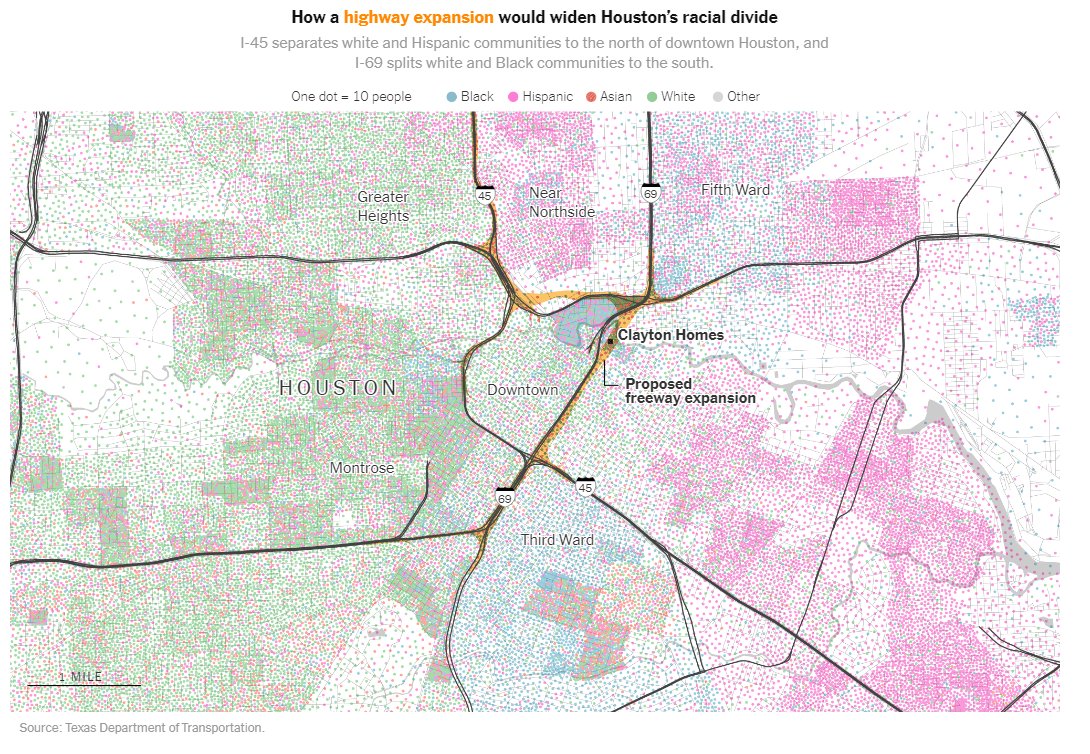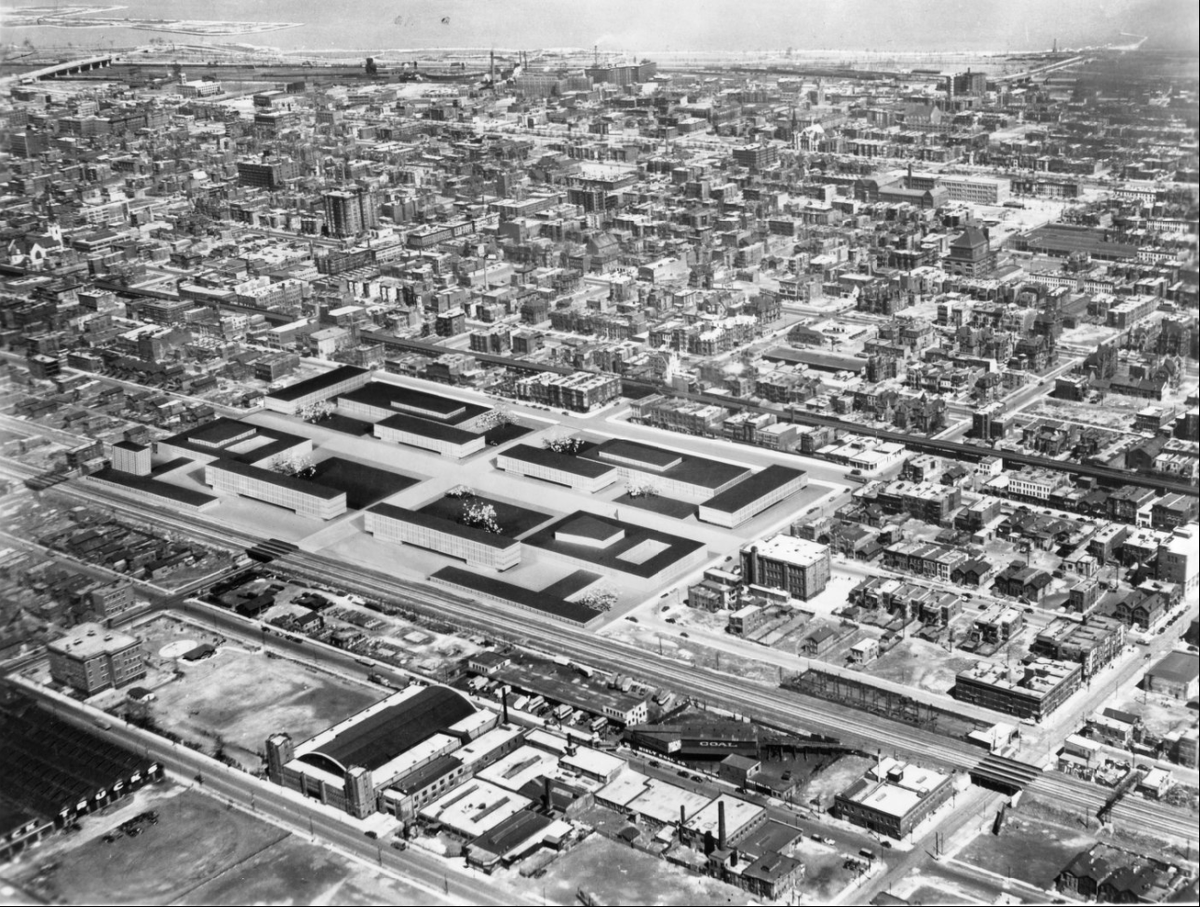"Across Southern CA, freeways that paved over Black and Latino neighborhoods—such as the 5, 10 & 110—were completed, while those proposed to cross whiter, more affluent areas were stopped," writes @latimes. The 110, seen here, cut through South LA, displacing tens of thousands.
@latimes More info about the racist history of freeway construction in this NYT article I had the opportunity to write last fall: nytimes.com/interactive/20…
Construction of the 110 in the 1950s required the demolition of thousands of homes and buildings across Downtown and South Los Angeles. Simultaneous “urban renewal” projects cleared vast swaths of the city, also displacing thousands of residents.
More info on highway construction in LA here:
latimes.com/projects/us-fr…
latimes.com/projects/us-fr…
Two of the most prominent urban renewal projects seen in this animation: First the clearance of the Mexican-American community in Chavez Ravine & construction of Dodger Stadium; and next the redevelopment of racially-diverse Bunker Hill. These projects displaced 12,000 residents. 

The dense, historic buildings of Bunker Hill were replaced with a high-rise financial district. The diverse community that occupied the neighborhood was dispersed. In redlining maps, the gov't derides the neighborhood as “one of the city’s melting pots.” dsl.richmond.edu/panorama/redli…


In “City of Quartz,” Mike Davis writes: “Redevelopment massively reproduced spatial apartheid. The moat of the Harbor Freeway [110] and the regraded palisades of Bunker Hill cut off the new financial core from the poor immigrant neighborhoods that surround it on every side.” 

The freeways themselves cut through existing neighborhoods and made possible the development of new suburbs on what had previously been the periphery of the city. The vast majority of these new developments were closed to anybody considered nonwhite: latimes.com/opinion/story/…
If you find these posts informative, consider supporting on Patreon! Many of the images and aerial photos I colorize and remaster aren’t free, so any support goes a long way towards enabling me to make more. Thanks very much to my existing supporters! segregationbydesign.com/support
• • •
Missing some Tweet in this thread? You can try to
force a refresh

 Read on Twitter
Read on Twitter



















